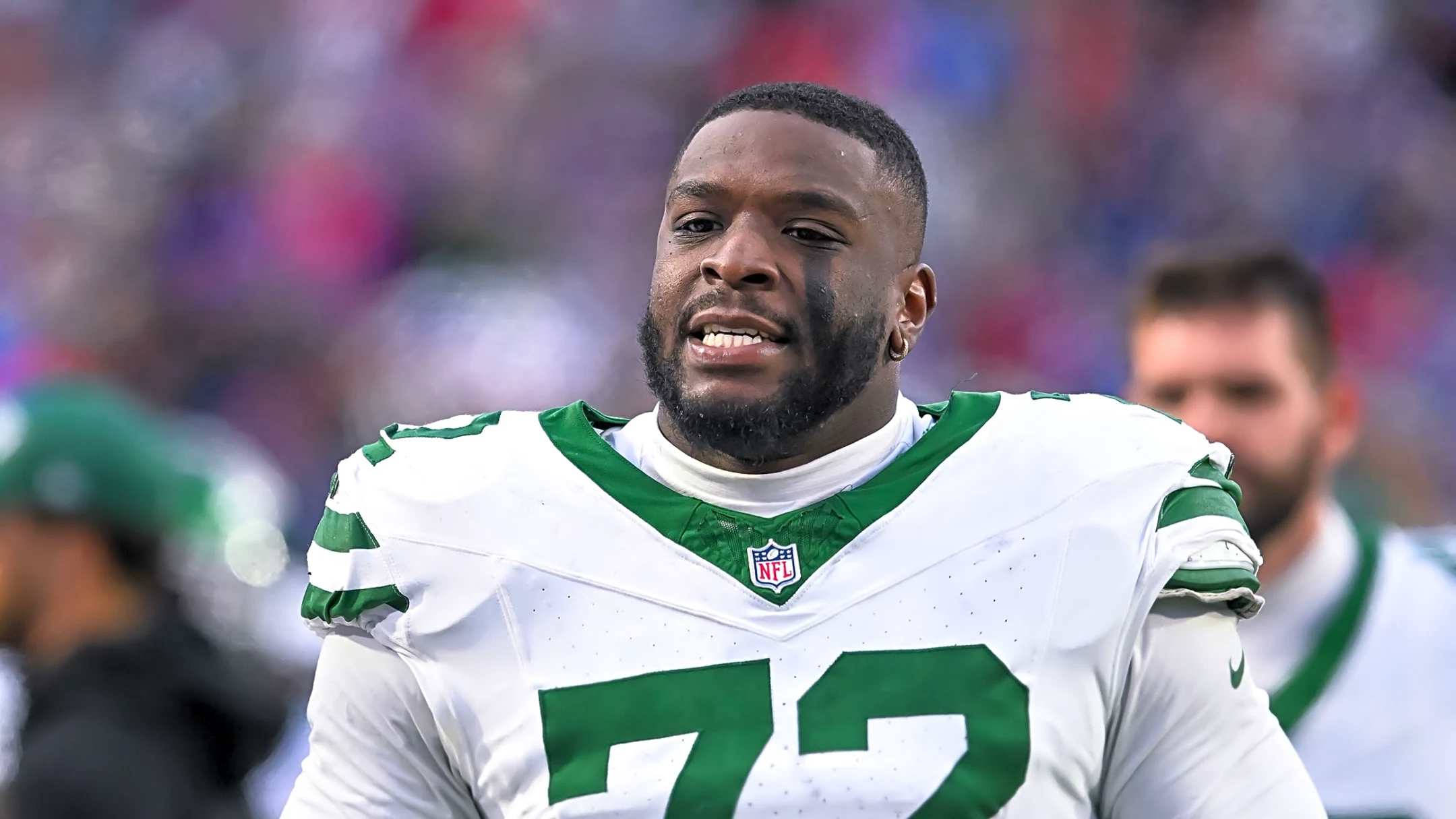By Jets X-Factor,Michael Nania
Copyright yardbarker

Glenn quickly atoned for his mistake by releasing Gipson, but the damage was already done. The rookie head coach put out a fire that he started.
And now, for the second consecutive week, the most pivotal play of a Jets loss was a predictable blunder by a player who had no business making the 53-man roster.
Why is Micheal Clemons still on the Jets?
The Jets’ 30-10 disaster against Buffalo was far too multifaceted to be pinned on a single play, but if there was one moment that crushed the Jets more than any other, it was Micheal Clemons’ roughing the passer penalty in the first quarter.
New York’s offense started the game with an ugly three-and-out. On the ensuing Buffalo drive, the Bills marched their way down to the Jets’ 18-yard line, only for an intentional grounding penalty to bury them in a third-and-19 situation from the Jets’ 30-yard line.
The Jets’ defense held up, forcing a Josh Allen incompletion to set up a 48-yard field goal attempt by Matt Prater. That’s no gimme, and even if the kick was made, it was a stop that would have had the Jets feeling good about their chances of staying in the game.
Instead, Clemons roughed Allen, keeping Buffalo’s drive alive. The Bills scored three plays later after a trio of effortless runs, and the Jets could never regain their footing.
It was a deflating moment that let the air out of the team. Of course, it was early enough that the Jets had ample time to pick themselves back up, so we cannot pin the entire loss on Clemons’ penalty, but these types of tide-tilting plays are often the first domino to start a team’s downfall.
If the penalty had been committed by anyone else, we probably would not be talking about it right now. But when the penalty is committed by a player who is now in his fourth consecutive season of being notorious for these foolish blunders, the blame shifts to the coaching staff and front office for allowing him to stick around.
New York’s fourth-year defensive end has more penalties (9) than sacks (7.5) across 51 NFL games. Clemons is particularly prone to immature penalties, as Sunday’s flag marked his sixth call for unsportsmanlike conduct. That comprises five roughing the passer flags and one disqualification for an altercation.
If Clemons were any good, the Jets could justify keeping him on the roster despite his recklessness. In reality, he is a liability who hardly warrants a roster spot before even accounting for his penalty woes.
In 2024, Clemons was the 123rd-ranked edge defender out of 130 qualifiers at Pro Football Focus. He placed 100th as a pass rusher and 119th as a run defender, which is troubling considering run defense is supposed to be his calling card.
Clemons turned in an abysmal season opener against Pittsburgh, earning a 44.6 overall PFF grade as he recorded no tackles, no pressures, and one missed tackle on 30 defensive snaps. Then, he followed it up with yet another one of his trademark killer penalties in Week 2.
The Jets had every opportunity to see this coming throughout the summer. Clemons had a penalty in the preseason opener for his actions in a post-play skirmish, which prompted Glenn to bench him. When Clemons was on the field in the preseason, he did little of note, posting one tackle and one hurry in two games (21 snaps) while earning a modest 61.4 PFF grade against low-level competition.
Clemons was an obvious cut candidate based on his play. In fairness to the Jets, they severely lack edge depth, so it’s not as if they had any appealing alternatives. That may have prompted them to consider Clemons a rosterable player by default.
However, Clemons’ salary should have been the determining factor to push him out. Clemons has a $3.6 million cap hit this year, of which the Jets can clear $3.4 million by releasing him. Those savings can be rolled into next year, when the Jets can use that money on a much better player than Clemons. For instance, Josh Myers, a quality backup center, was signed this year for $3.5 million.
Despite the salary cap ramifications, continued poor play, and continued poor discipline, the Jets kept Clemons around. Two weeks later, he crushes the team with yet another brutal penalty, all while doing nothing as a player to make up for it.
Who could have seen this coming?
If Glenn is serious about his messages of accountability, he will follow up his release of Gipson with the release of Clemons this week.
Why are the Jets doing this?
In the cases of both Gipson and Clemons, the Jets elected to ignore solidified bodies of work for… some reason. Only the Jets themselves could tell us why they are making these types of calls, and even if they tried to explain it, their reasoning probably wouldn’t suffice given how damning the evidence is.
My best guess is that it could be a case of arrogance regarding the coaching staff’s capabilities.
New York has a brand-new coaching staff, and throughout the offseason, general manager Darren Mougey worked with Glenn to build a roster centered around unheralded, high-upside players with moldable tools. The Jets ignored big-money spending on proven veterans, instead trusting the coaching staff to mold the team’s pieces of clay into better players than their salaries would suggest they are.
This line of thinking seemingly extended to the inherited players on the roster. There is nothing about Gipson or Clemons’ resumes that suggest they are rosterable players, but Glenn and the Jets’ staff may have seen something in each player that made them believe they could mold Gipson and Clemons into the best versions of themselves.
Coaches should trust their instincts in some cases. Rosters should not be built on a spreadsheet. There are many examples of breakout stars who would not have gotten the chance to improve if they were buried for their early production.
However, there is a line that should not be crossed. Sometimes, a player’s body of work is too far gone to justify believing in him beyond what he has actually shown on the field of play. A player needs to show at least some semblance of potential that justifies the coaching staff’s faith in him.
In the case of Gipson and Clemons, neither player showed nearly enough upside to justify their spots on the roster. They both offered multi-season samples of poor play, without doing much of anything in the 2025 preseason or training camp to suggest they were turning a corner. Not to mention, Clemons is already 28 years old, which makes it doubly foolish that New York believed he had any chance of improving.
But since Glenn and the Jets’ coaches were overconfident in their ability to turn players around, they kept Gipson and Clemons despite both players having more red flags than Raymond James Stadium.
At least, that is my best guess as to why these players were kept. Perhaps the Jets have a different explanation beyond my understanding that would atone for these apparent roster-building sins, although I would be shocked.
New York is 0-2, and the most pivotal play of each loss was a predictable and avoidable blunder by a proven liability who was an obvious cut candidate mere weeks ago. That reflects poorly on some combination Aaron Glenn and Darren Mougey.
Perhaps those calls were 100% Glenn, perhaps they were evenly split, but either way, it’s not a good look for a regime that was supposed to bring competent decision-making to Florham Park.



